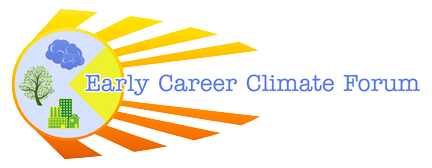Migratory Birds: Linking Science & Management in a Changing Climate
I recently joined the National Climate Change and Wildlife Science Center (NCCWSC) as a Biologist through the Presidential Management Fellowship program (PMF). As a master’s student at the Yale School of Forestry and Environmental Studies, I knew that I was interested in joining the federal government but was unsure about which agency or department would best align with my interests in applied ecology, wildlife conservation, and natural resource management. Near the end of my studies, I attended a conference where one presentation after another highlighted the incredible research happening at USGS. I decided then that I would apply for the PMF with the goal of joining USGS. In late July, I was delighted to start a position with NCCWSC that spoke to my interests in migratory birds, the impacts of climate change on biological communities, and the links between science, management, and policy.
The PMF program was originally established by President Carter in 1977, with the goal of encouraging graduate students to join federal service. The program emphasizes leadership and a commitment to the public interest, and provides fellows with a two-year appointment at a federal agency and extensive training opportunities. During their appointment, PMFs also may spend 4-6 months at a different department or agency, so that at the end of their fellowship, they have gained broad exposure to multiple facets of the federal government.
In my current position with NCCWSC, I am working to develop a cohesive research program on the impacts of climate change on migratory birds for NCCWSC and the DOI Climate Science Centers (CSCs). Our goal is to provide scientific information to managers and decision makers on how climate change may affect migratory birds, with the ultimate mission of supporting conservation and sustainable management at national and continental scales. The field of migratory bird research is extremely important to a wide range of stakeholders, both in its own right and because birds can serve as highly visible indicators of broader environmental change.
 Red Knots. Photo: USGS http://gallery.usgs.gov/
Red Knots. Photo: USGS http://gallery.usgs.gov/In Alaska, for example, migratory birds are already demonstrating multiple responses to climate change—some songbirds like the Lapland longspur have changed the timing of their breeding to coincide with earlier snow melt, while some water birds like Brant geese have shifted where they feed in response to climate-driven changes in food availability. Because bird populations are well-monitored (through projects like eBird), looking for changes in bird numbers, distribution, and health can tell us a lot about other changes in the environment.
Many organizations, from other federal agencies to non-profits and academic institutions, have already conducted extensive research on migratory birds and climate change. Yet there remains much that we don’t know about how climate change will affect migratory birds. Climate change is likely to bring about complex changes in how birds are distributed across a landscape; when they migrate; how much and where food is available to them, as well as how birds interact with other species. How will sea level rise affect the amount of available habitat for shore and wetland birds on the Atlantic and Pacific Coasts? How might drought change the wetlands available for breeding birds in the Prairie Pothole region? If amounts of snow and ice change around the Great Lakes, how might this impact the survival of dabbling ducks? Questions such as these reflect the great uncertainty still surrounding migratory bird response to climate change.
Compounding the gaps in scientific knowledge, there is much uncertainty over what actions could or should be taken to successfully conserve and manage these species. Drawing the links between gaps in scientific knowledge and responding to needs of land and wildlife managers is a key part of the NCCWSC mission, and it is a challenge which will likely play a central role in this migratory bird initiative.
There are two important preliminary steps in the development of this research program-- the first is to synthesize and summarize the work that we have already done at NCCWSC & the CSCs. The second, happening in parallel, is to clearly understand the current work of other agencies, research institutes, and non-governmental organizations on migratory birds, so that our future program can be complementary and not duplicative of existing efforts. This is where my work currently stands—trying simultaneously to understand what work we’ve done so far, what work is being done by others, defining a niche for NCCWSC and the CSCs, and starting to develop the main tenets of this research program.
 Hermit Thrush. Photo: USGS http://gallery.usgs.gov/
Hermit Thrush. Photo: USGS http://gallery.usgs.gov/Thus far, I’ve had the privilege of meeting with USGS researchers at Patuxent Wildlife Research Center, who manage several important bird research programs, including the Breeding Bird Survey (BBS). The BBS, which was established in the 1960s, provides an important source of long-term, annual data for over 400 species of birds that breed in North America. Numerous research projects have arisen from this program, including a project which is developing indicators of climate change using BBS data. In addition, I’ve been able to meet with several U.S. FWS National Wildlife Refuge Managers; coordinators with the Landscape Conservation Cooperatives; and one representative of the Joint Ventures. I look forward to meeting with more scientists and managers over the next two years, to learning more about how changes in our climate may shape the future of migratory birds, and what we as scientists and managers can do to effectively respond to that change.
NOTE: Comments will be visible to the public. Before commenting for the first time, please review the ECCF's Editorial Policy.


 Madeleine Rubenstein
Madeleine Rubenstein
Add comment